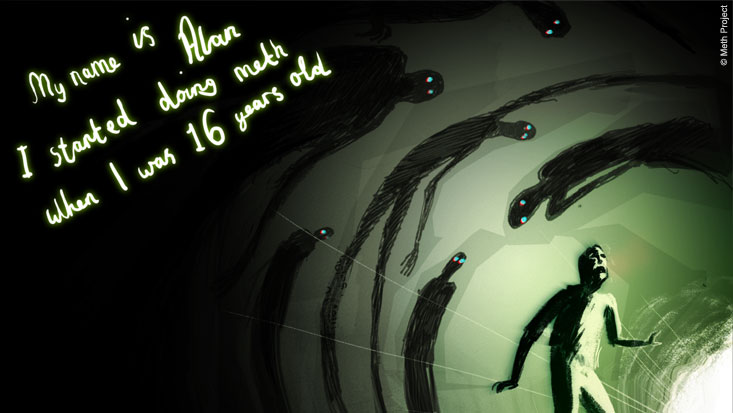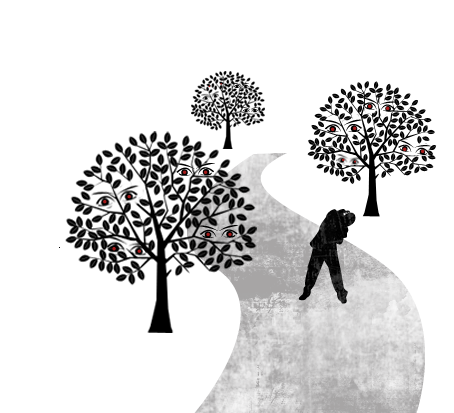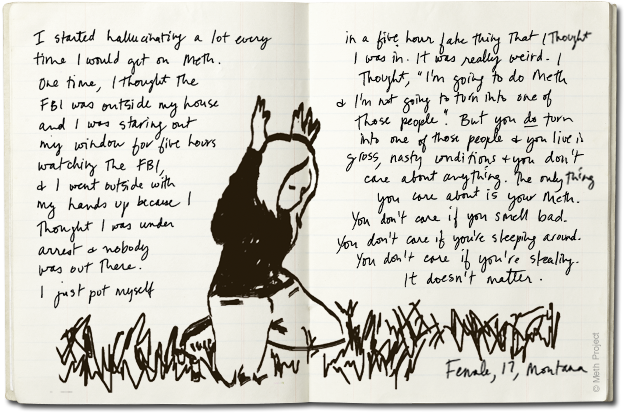
Anxious Mind
Delusions. Suspicion. Anxiety. Meth causes fundamental changes in the areas of the brain that control emotions and judgment. Users can have an irrational sense of overwhelming fear and being under threat.
See how a brain on meth behaves
NORMAL BRAIN: Hears a noise.

METH BRAIN: Hears the noise as a threat.

NORMAL BRAIN: Looks to see where it came from.

METH BRAIN: Anxiously looks to see where it came from.

NORMAL BRAIN: Understands that an acorn dropped, probably caused by a squirrel.

METH BRAIN: Believes that there are people in the tree spying on him.

NORMAL BRAIN: Person carries on as usual.

METH BRAIN: Spends hours obsessed and frightened
that he's being watched.


Users experiencing Meth-induced paranoia don’t usually believe that:
Terms
-
Small almond-shaped area of the brain that controls memory and emotions. Methamphetamine’s overstimulation of the amygdala can lead to paranoia and anxiety.
-
The body’s stress-response system, or natural alarm system, that prepares the body to fight or flee when danger is imminent. When this response is activated, the body’s physiology changes—blood pressure and heart rate increase, pupils become dilated, and there is a release of adrenaline. Methamphetamine unnaturally triggers this reaction, forcing the mind and body into an extended state of hyper-alertness. Mania
-
False or warped perceptions of reality. In other words, seeing, hearing, or feeling things that do not exist. These hallucinations can be sinister or threatening and may include seeing what Meth users refer to as “shadow people” or imagining that insects are under their skin. Rochelle's Story
-
A state in which people have irrational fears and delusions of being in constant danger and that other people want to harm them. Meth causes this disorder by overstimulating emotional regions of the brain and compromising areas that control judgment. Mind Games










